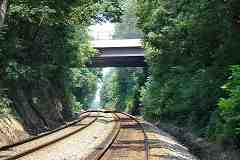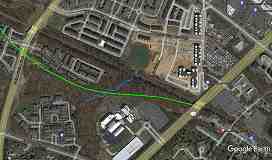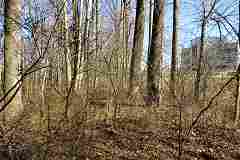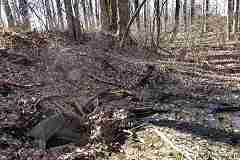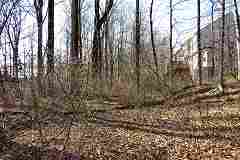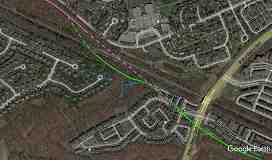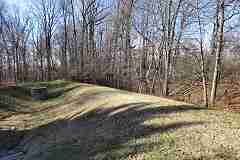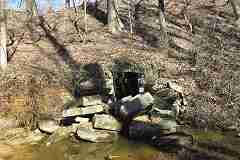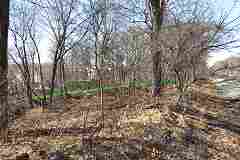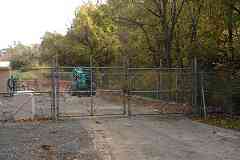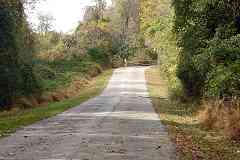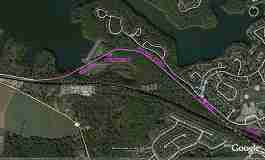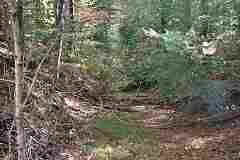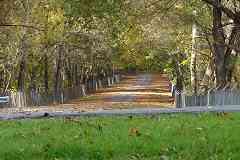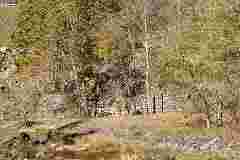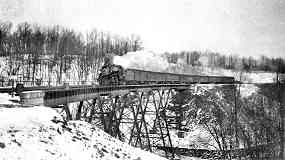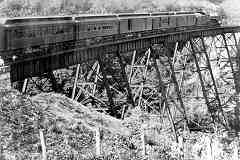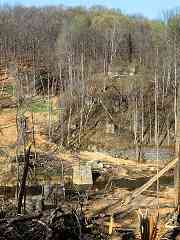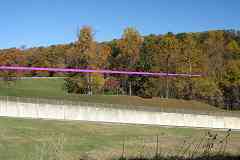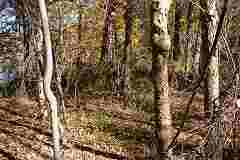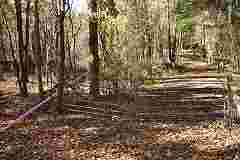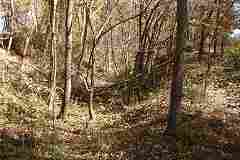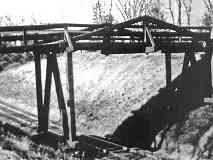|
In the vicinity of Father Hurley Boulevard, the original alignment
(green) has been smoothed over by housing.
The solid lines trace stretches of railroad known via photographic
evidence or surviving grading, either mounds or cuts. Because the
original alignment does not lead to the excavated cut (magenta), I
suspect magenta follows a second alignment that straightened an unnecessary
arc in the original. This second alignment may have arisen when in 1896
B&O swapped out a wooden trestle over Seneca Creek for a steel version.
The dashed lines represent my speculation as to the location of the
original and second alignments. Housing plus the third (current)
railroad alignment erased what could have been supporting physical evidence.
| 